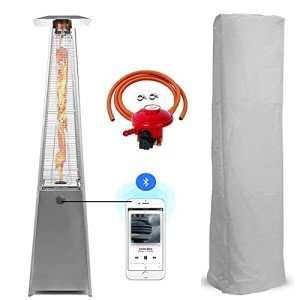Buying Gas Radiant Heaters: A Comprehensive Guide
Gas radiant heaters have acquired appeal over the last few years for their performance and ability to supply instant warmth. As more property owners and businesses try to find ways to keep their areas comfortable, understanding the features, advantages, and factors to consider when buying these heating units can be very informative. This post looks into the complexities of gas radiant heaters, aiding possible purchasers in making informed choices.
What are Gas Radiant Heaters?
Gas radiant heaters are gadgets that use propane or natural gas to release heat directly into a space. Rather than heating the air, they warm items and people in their vicinity, supplying comfort more quickly and effectively. Buy Patio Heating are popular for both indoor and outdoor settings due to their versatility and efficiency.
Secret Features of Gas Radiant Heaters
- Direct Heating: Unlike standard heaters that warm the air, gas radiant heaters provide direct warmth, making them an efficient choice for rapidly heating up spaces.
- Portability: Many designs are offered as portable systems, allowing them to be quickly moved from one area to another.
- Fuel Variety: Gas radiant heaters can be powered by gas or propane, giving users flexibility based on accessibility and choice.
- Adjustable Settings: Most gas radiant heaters featured adjustable heat settings, permitting users to customize the level of warmth based on their requirements.
Advantages of Gas Radiant Heaters
- Energy Efficiency: These heaters transform gas into heat effectively, leading to lower utility expenses compared to electric heaters.
- Quick Heating: Radiant heat is felt practically right away, making these heaters suitable for unexpected temperature level drops.
- Low Maintenance: Gas radiant heaters usually require less upkeep than electrical models, making them a problem-free alternative.
- Environmentally Friendly: When powered by tidy gas, these heaters can be a more ecologically sustainable option compared to other heating approaches.
Types of Gas Radiant Heaters
When it comes to selecting a gas radiant heater, it's important to understand the different types offered. Below are the most typical options:
- Indoor Gas Radiant Heaters: Designed for indoor spaces, these heaters are typically vented or unvented and frequently featured built-in security functions.
- Outdoor Gas Radiant Heaters: Commonly utilized in outdoor patios or outdoor dining locations, these heaters are designed to stand up to the elements.
- Wall-Mounted Gas Radiant Heaters: A space-saving option, these units are ideal for smaller sized areas and can be outfitted with various heat outputs depending on the area's requirements.
- Freestanding Gas Radiant Heaters: These portable models can be utilized in various places, perfect for those who require flexibility.
Buying Guide: How to Choose the Right Gas Radiant Heater
When purchasing a gas radiant heater, a number of elements must be thought about to guarantee you choose the ideal model for your space:
1. Heating Capacity
- Determined in BTUs (British Thermal Units), the heater's capacity determines how much area it can effectively warm. Buyers must examine their specific requirements based on space size.
| Space Size (sq feet) | Recommended BTUs (for Gas Radiant Heaters) |
|---|---|
| 100 - 200 | 5,000 - 10,000 BTUs |
| 200 - 400 | 10,000 - 20,000 BTUs |
| 400 - 600 | 20,000 - 30,000 BTUs |
| 600 - 800 | 30,000+ BTUs |
2. Kind of Gas
- Think about whether you will be utilizing propane or natural gas, as various heaters deal with different fuel types.
3. Security Features
- Try to find models geared up with security features such as automated shut-off valves, tip-over security, and oxygen deficiency sensors.
4. Setup Requirements
- Some heaters may need expert setup, specifically vented designs. Be sure to consider the costs and requirements connected with setup.
5. Mobility
- If versatility is vital, think about portable models that can be quickly moved from one place to another.
Installation and Maintenance
Gas radiant heaters are typically uncomplicated to install, especially portable models. Nevertheless, vented options may require professional setup to guarantee they satisfy regional safety codes.
Upkeep typically involves:
- Regular cleansing to avoid dust buildup.
- Examining gas connections and fittings for leakages.
- Making sure security features are practical.
Idea: Regular checks around the unit can assist extend its life expectancy and keep security.
Regularly Asked Questions (FAQs)
Q1: Are gas radiant heaters safe for indoor use?A1: Yes
, as long as they are appropriately vented and geared up with required safety functions, they can be securely utilized indoors.
Q2: Can gas radiant heaters be utilized in enclosed spaces?A2: Unvented gas heaters can present dangers in enclosed spaces due to prospective suffocation or carbon monoxide accumulation. Always guarantee adequate ventilation. Q3: How do I know what size heater I need?A3: The proper size depends on the area you mean to heat. Refer to the BTU chart
above to identify your needs. Q4: What is the distinction in between propane and gas heaters?A4: The main distinction lies in their energy source
; propane is delivered via tanks, while gas is generally piped into homes. Q5: How can I make the most of efficiency?A5: Ensure the heater is properly sized for your space, maintain it regularly, and think about using it in mix
with other heating techniques for optimum comfort. Gas radiant heaters can be an excellent addition to any home or company, offering energy-efficient and fast heating solutions. By comprehending the various types, functions, and factors to consider
when acquiring, purchasers can make educated decisions that meet their heating needs. With the right option, these heaters offer comfort, reliability, and a welcoming environment throughout cooler seasons.

